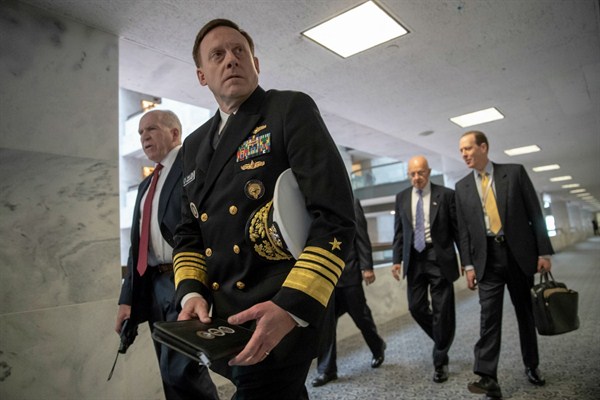The New York Times reported yesterday that the U.S. is targeting Russian cyber-operatives involved in efforts to disrupt America’s congressional midterm elections in early November. Though there are few details on what measures have been taken, it would seem to amount to the cyber equivalent of a brushback pitch to deter individual actors by making it clear that U.S. Cyber Command has them in its sights.
The Times describes the effort as the “first known overseas cyberoperation to protect American elections, including the November midterms.” The Obama administration famously dithered in its response to the initial discovery of Russian interference in the 2016 U.S. presidential election. As recently as February, President Donald Trump, the beneficiary of those earlier Russian efforts, had ordered no steps to counter ongoing Russian meddling, according to congressional testimony from Adm. Michael Rogers, then the head of the National Security Agency, or NSA. In the absence of clear presidential guidance, Cyber Command and the NSA took matters into their own hands to coordinate efforts to counter the latest Russian campaign.
At first glance, the current operation seems to be tepid stuff. Eight years ago, the revelation that the U.S. and Israel had seriously damaged Iran’s uranium enrichment centrifuges using a malicious computer worm known as Stuxnet focused attention on the nature of cyberwars to come. At the time, the use of cyberattacks to cause catastrophic damage—think unauthorized nuclear launches and massive power outages—figured prominently in the public debate. By contrast, Cyber Command sending “You’ve got mail!” notices to malicious Russian hackers seems a bit anti-climactic.

